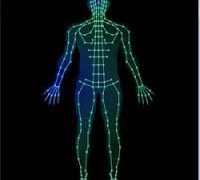We so often hear that stress causes disease. In fact, it’s so widely publicized and accepted that stress contributes hugely to almost all major causes of death that we might not even take it seriously. Observing the busy world around me, including myself, I wonder sometimes if this information really sinks in at all. Even eating well, exercising or building a personal spiritual practice can seriously add on the stress because, really, for most, all these choices must be squeezed into a busy work week punctuated by weekend “crashes.” Every time I hear, “thank God it’s Friday,” I feel a little convicted, like I should help this person reorganize his/her life in order to NOT live a weekly five-day marathon of grueling self-compromise in exchange for two days of recreation or personal development time. It’s my job; I can’t help it.
When it comes to organizing a life that minimizes stress, attitude is everything, and fixing a bad attitude seems so much more nebulous than, say, taking one extra vitamin that is supposed to magically ward off cancer. Why do some people completely freak out about traffic, deadlines, an ill-intended comment, self-image, etc., while some people seem unperturbed by the very same factors? The key lies in a combination of genetics and conditioning.
We were taught from an early age by unspoken instructions. We watched the adults in our lives respond for better or worse to work, play, partnerships, grievances, insults, successes, hopes, failures and love. We absorbed this information along with the attitudes they had about life and began to formulate our own fledgling versions of reality. We inscribed their own limiting beliefs into our codices of truth and sought proof in the outside world for the way we imagined it to be. Along the way, interpersonal tragedy and comedy further shaped our beliefs into concrete, irreconcilable differences between our selves and others, often leaving us feeling alienated and longing for connection. By the time we reach adulthood, we have created elaborate blueprints of how we relate to the world and how we believe the world should relate to us, blueprints as individual to us as our own fingerprints. It is these blueprints that inform our “good” or “bad” attitudes about life, ourselves and others.
Now consider our biology as humans as it relates to stress. The almond-shaped amygdala in the brain is part of the limbic system. It is the place where emotions and long-term memory are created and negative-experiences are encoded. This little gland is the key to the “fight or flight” response because it signals to the brain when safety is threatened, and cortisol along with adrenaline pumps into the blood stream. Consequently, our bodies become tense, blood pressure and heart rates rise, and we lose touch with our natural state. Our ancestors experienced this trigger to fight or flee in the face of very real dangers like predators. Indeed, we need this physiological ability to weather true dangers; however, to our detriment, we feel this response in little doses almost every day. Think about every time you feel stressed at work, in your relationship, about finances or about your own self-image. Now throw in the unprocessed traumatic memories from childhood, jaded blueprints, unforgettable events that tainted our spirits and negative emotions we’ve learned to wear as identities, and we have an internal chemistry that breeds disease and discontent. To assuage the stressed-out-thank-God-it’s-Friday-feeling, most of us reach for some sort of vice. It’s a perpetual cycle, and worst of all, seems completely normal. “It’s just the way it is,” we tell ourselves. Or is it?
Fortunately, our brains can be retrained to experience new perceptions and feelings. A tool called Tapping is fast track to processing the “stressy” energy we feel about virtually everything from a traffic pile-up to the negative self chatter in our minds. The process of tapping is so simple it can, at first, seem unlikely to affect the immensity of daily drama we create; we tend to seek an equally dramatic solution to our myriad difficulties. It is, however, its simplicity that makes it such an effective and ubiquitous tool.
It works like this. Whenever you feel stressed or experience any negative shift in energy, whether induced by a present situation or a painful memory, you percussively tap on the same meridian channels an acupuncturist uses. Take a deep breath. Imagine in vivid detail the situation that is causing you grief. Focus on the specifics you feel with regard to visual images, emotions, negative self-talk, etc. You progress from one acupoint to the next, remaining in one place for a few seconds. You accept what is or what was without fighting it or fleeing from it. In accepting the situation, you release your resistance to it, and the brain will literally cease to create consequent stress. As you tap, you calm down faster than you would if you were to merely keep dwelling on the negative perceptions and situations. Your amygdala’s panic signal is halted, and your blood pressure and heart rate return to stasis. In your brain, the hippocampus then categorizes the stressful memory or present experience as a non-threat. It’s that ridiculously simple. You can experiment with tapping on anything because the source of all your perceptions begin and end within your own head. For more details and a list of the acupoints, published studies and instructional videos, visit Tapping Solution and Sonya Sophia.
Personally, I have been using tapping for about eight years to process physical pain, stress, emotional angst, etc. I can further coach you on how to practice this tool in order to ditch your pain meds, heal a relationship, create a new emotional pattern, anchor new lifestyle changes, etc. Contact me through my website, Finn Deerhart.




